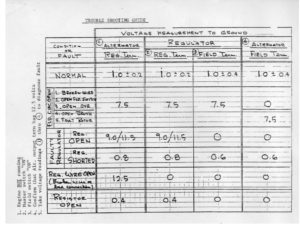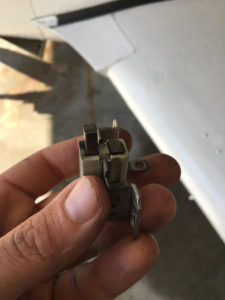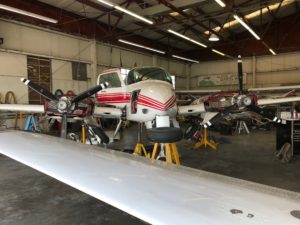Podcast: Play in new window | Download
Limited, Introductory Opportunity In Person With Dean – Read to the End.
Highlights from this week at Classic Aviation:
- Meeting Oscar (a podcast listener,) and his son.
- Talking about high CHT’s on Oscar’s Mooney.
- Annual Inspection on an N35 Bonanza.
- A charging system issue, and how previous email information from Justin, a podcast listener, was so helpful.
- Update on Jerry’s Cessna 310 prop.
- Annual inspection on a Piper Cherokee.
Here is the information Justin had sent me about his InterAv alternator system is his 1960 Debonair, that I found helpful in troubleshooting the InterAv system in the N35 Bonanza.


And here are the brushes Justin found in his alternator:

In the case of the N35 Bonanza, it turned out to be only a broken wire terminal on the alternator, but it was helpful to have all that other information as well. Thanks Justin, and well done!
And thanks Jerry, for noticing that broken terminal for me in the shop yesterday. I appreciate that!
Now for a limited, Introductory opportunity for some one-on-one time with me:
Here’s what I’m offering to the first three airplane owners who contact me at deanshow@gmail.com
- 4 hours of one-on-one maintenance oriented training at your airplane, with Dean.
- You need to have a location where we can open or remove enough of your engine cowling to look at most of the engine area. (Preferably in a hangar.)
- Must be within about a 200 mile driving radius of KSHD.
Here is what we will cover:
- Extensive preflight inspection, from a maintenance perspective.
- Detailed evaluation of the engine area. I will compile a list of items found, along with recommendations, and email it to you later.
- Ground runup and evaluation. (I promise you will find this valuable.) We will talk about how to interpret what we see on the instrument panel, as it relates to what is going on in the engine compartment.
- Talk through the FAA file for your specific airplane.
- ICA’s (Instructions for Continued Airworthiness.)
- Other ideas you have, as time is available.
- AND, I will bring lunch for both of us. It will be awesome, because my wife Maria will make it awesome!
I know this is not for everyone, but I promise you will come away inspired! Imagine being able to notice things about your airplane that need attention. And imagine being able to communicate much more effectively with your A&P. I will help you do just that, and more. Think about how valuable it will be to you, when you can avoid unnecessary maintenance costs, as a result of your time spent with me.
Keep in mind this is an introductory offer.
If you want to take advantage of this, I encourage you to move quickly.
As soon as I see this episode appear in my podcast feed, I’m going to send out an email to my subscribers explaining the offer.
So don’t wait.
Here’s what it will cost…
$300 plus 50 cents per mile for my travel.
200 miles one way, total 400 miles = $200. That would be $500 for the complete package.
50 miles one way, total 100 miles = $50. That would be $350 for the complete package.
Email me NOW – deanshow@gmail.com and grab one of the 3 available spots, and we will get it scheduled.
I look forward to working with a few of you very soon.






Recent Comments